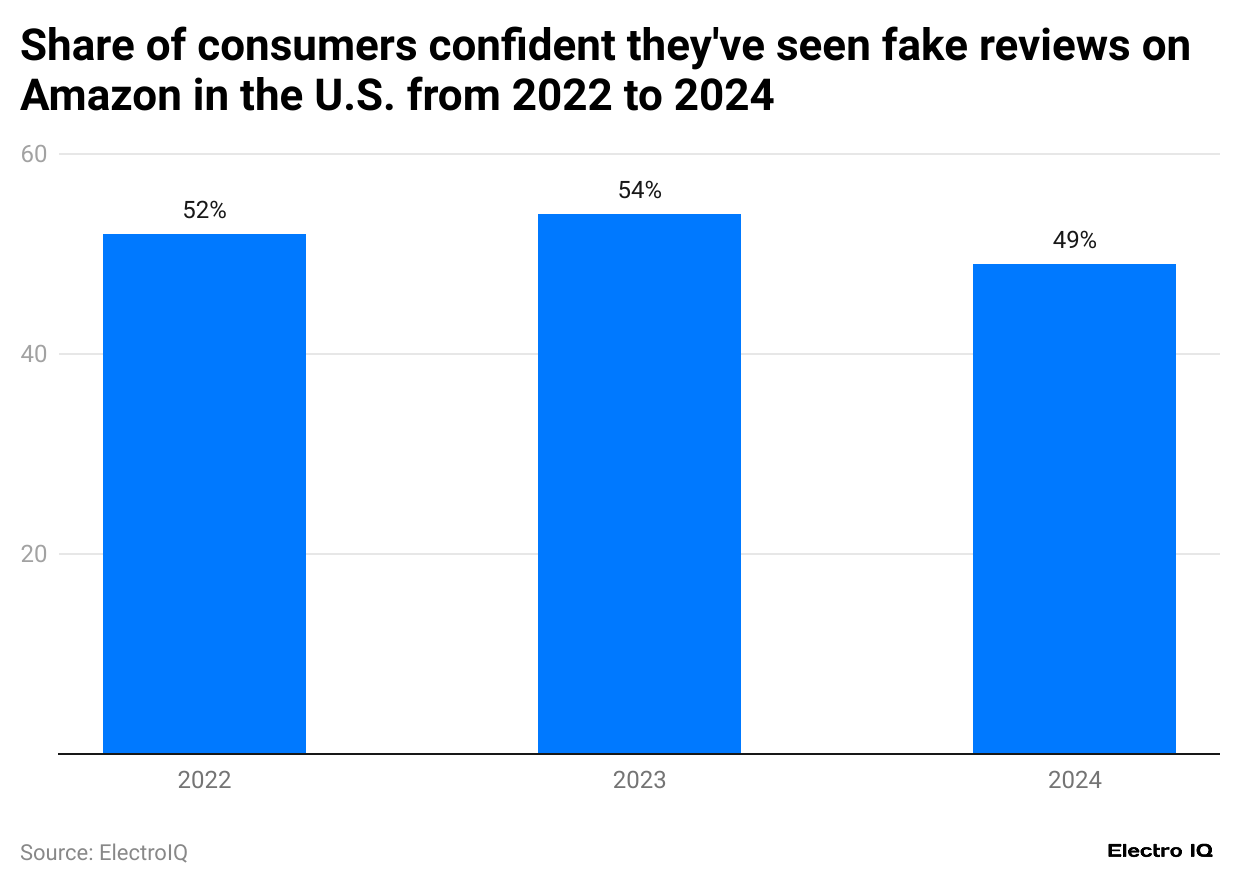Online Review Statistics By Customers, And Age Group
Updated · Dec 20, 2024

Table of Contents
Introduction
Online Review Statistics: The online review refers to the customer evaluation of a product or service developed by someone who has purchased and utilised it to provide a proper critique. Customer feedback is essential to delivering critique towards dedicated and transparent growth for the company.
It is necessary to go through the online review statistics and learn about relevant prospective features that make this form of customer critique effective on a holistic level and important information about its usefulness and how it serves as vital feedback mechanisms that bridge the gap between businesses and consumers.
Editor’s Choice
- 85% of consumers trusted online reviews as much as personal recommendations in 2023.
- 89% of U.S. shoppers read reviews before making any purchase in 2024.
- The 18-24 age group expects around 203 reviews before feeling informed about a product.
- 54% of consumers believed they encountered fake reviews on Amazon in 2023.
- 78% of consumers avoid products with ratings below four stars.
- 60% of consumers read reviews on smartphones before in-store purchases in 2024.
- 85% of consumers read reviews before buying electronics.
Product Reviews By Age Group
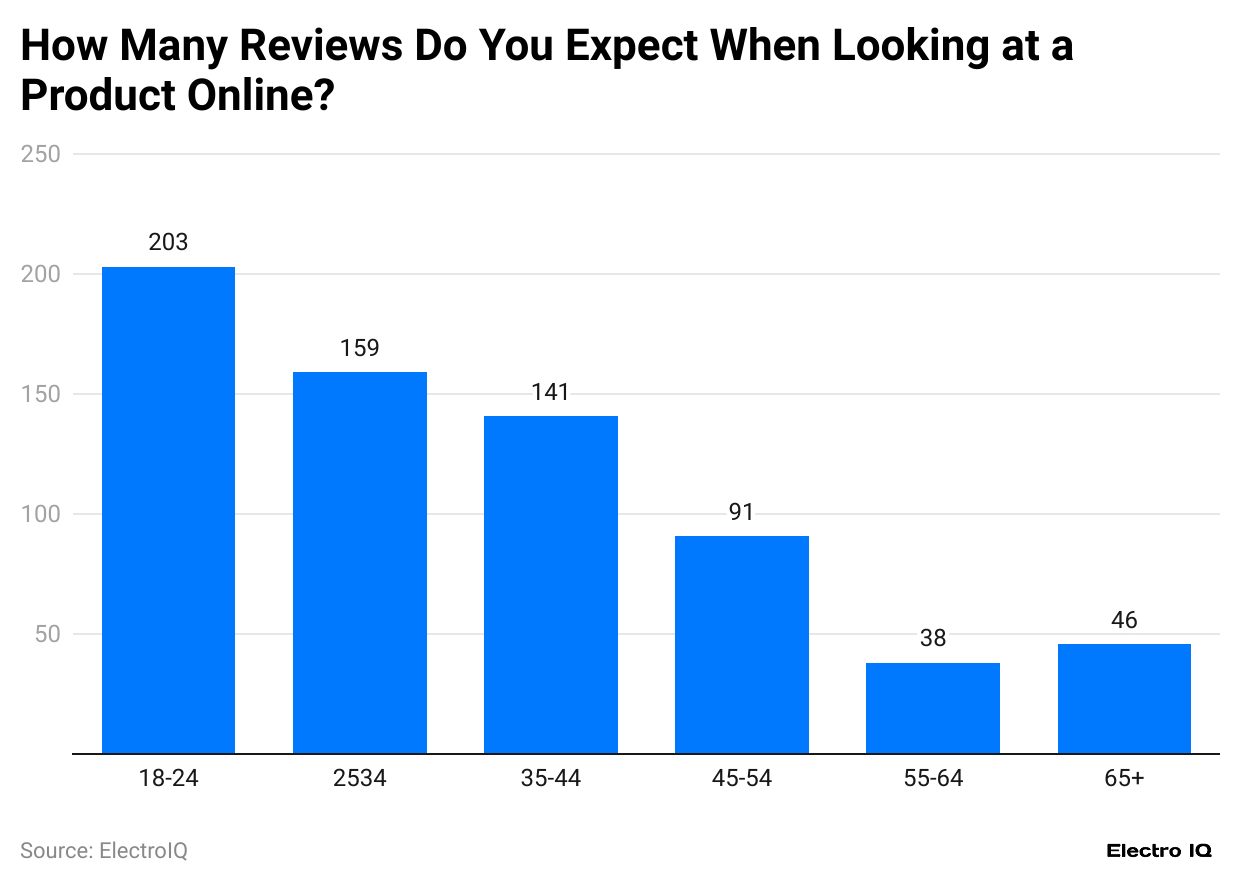
(Reference: statista.com)
- Online Review Statistics show that younger groups expect more online product reviews than older groups.
- Consumers aged 18-24 have the highest expectations for product reviews, looking for around 203 reviews before feeling informed. The 25-34 age group expects slightly fewer reviews, at approximately 159 reviews, indicating a slight decrease in the need for review volume with age.
- The expectation for those aged 35-44 continues to decrease, with 141 reviews considered sufficient. The 45-54 age group requires even fewer reviews, expecting around 91 reviews for adequate information. Among older consumers, expectations drop significantly: those aged 55-64 only look for about 38 reviews, the lowest expectation among all groups.
Confidence of Consumers After Watching Fake Reviews on Amazon
(Reference: statista.com)
- Online Review Statistics show that many U.S. consumers believe they’ve encountered fake reviews on Amazon, with confidence in spotting fake reviews slightly fluctuating from 2022 to 2024.
- In 2022, 52% of consumers were confident that they had seen fake reviews on Amazon, a figure that increased to 54% in 2023.
- It is predicted to decrease to 49% by the end of 2024, indicating a small decline in consumer confidence in identifying fake reviews.
The Attitude of Customers Towards Online Shopping
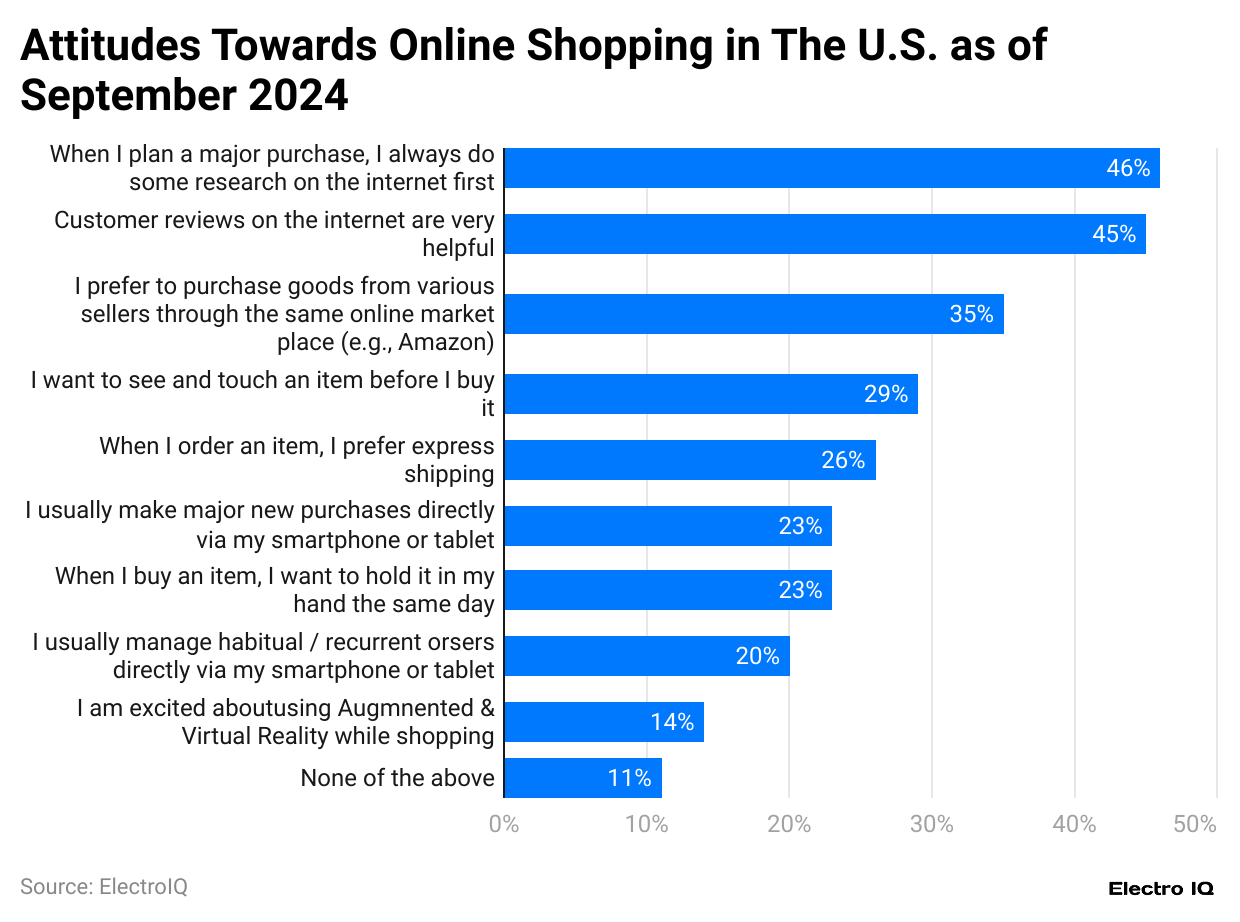
(Reference: statista.com)
- Online Review Statistics show that S. consumers strongly prefer conducting research and reading reviews before making significant online purchases, with convenience and trust being key factors in their shopping attitudes.
- 46% of consumers report that they always conduct research online before making a major purchase, while 45% find customer reviews helpful, 35% prefer trusted marketplaces, 26% favour express shipping, and 23% use mobile devices for major purchases, with another 23% wanting same-day delivery; only 14% are interested in augmented reality experiences.
Reviews Boosting SEO
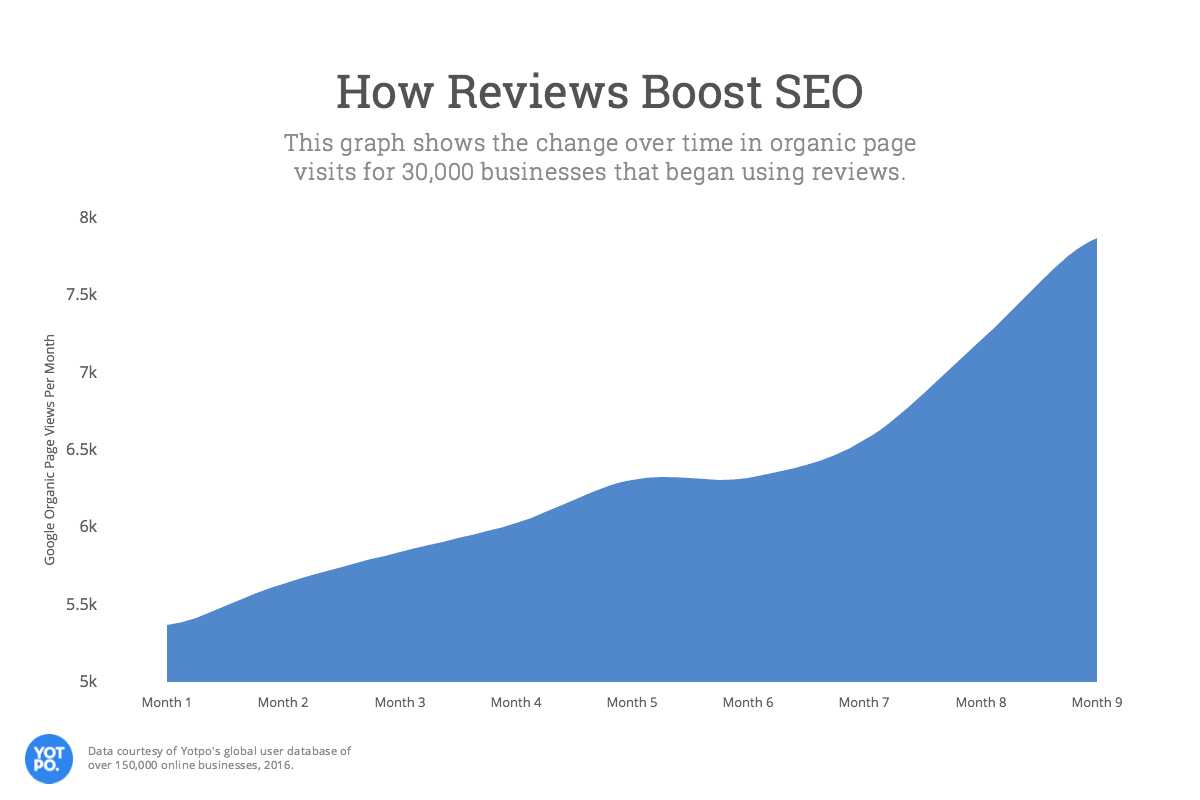
(Source: yotpo.com)
- Online Review Statistics show that SEO introduction consistently enhances SEO performance.
- As showcased in the graph, SEO gets boosted significantly over time with the introduction of online reviews.
Best Review Websites
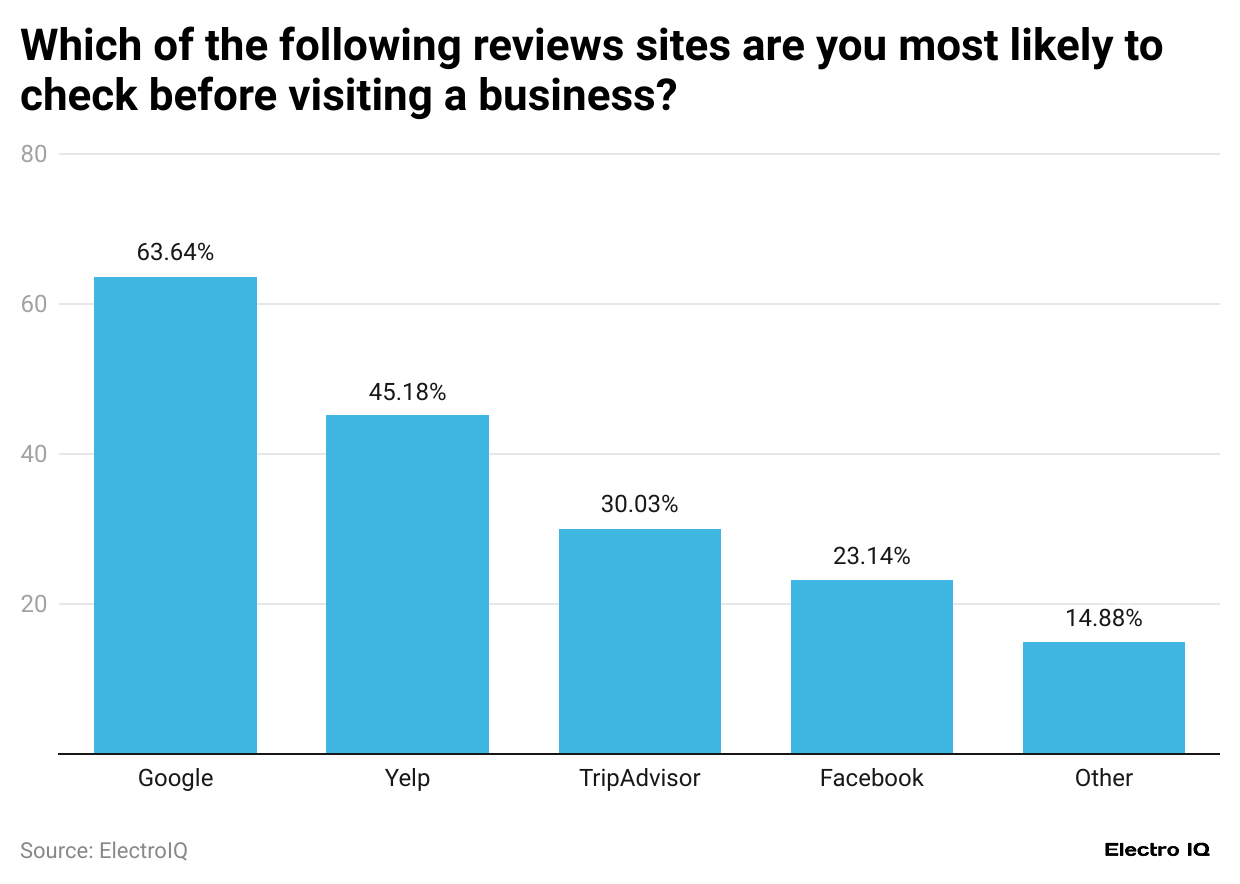
(Reference: www.reviewtrackers.com)
- Online Review Statistics show that prefer checking Google for reviews before visiting a business, followed by Yelp, with TripAdvisor and Facebook being commonly referenced.
- Google has the highest preference for review with 63.64%, followed by Yelp with 45.18%, Tripadvisor with 30.03%, Facebook with 23.14% and remaining websites with 14.88%.
Trust For Online Review
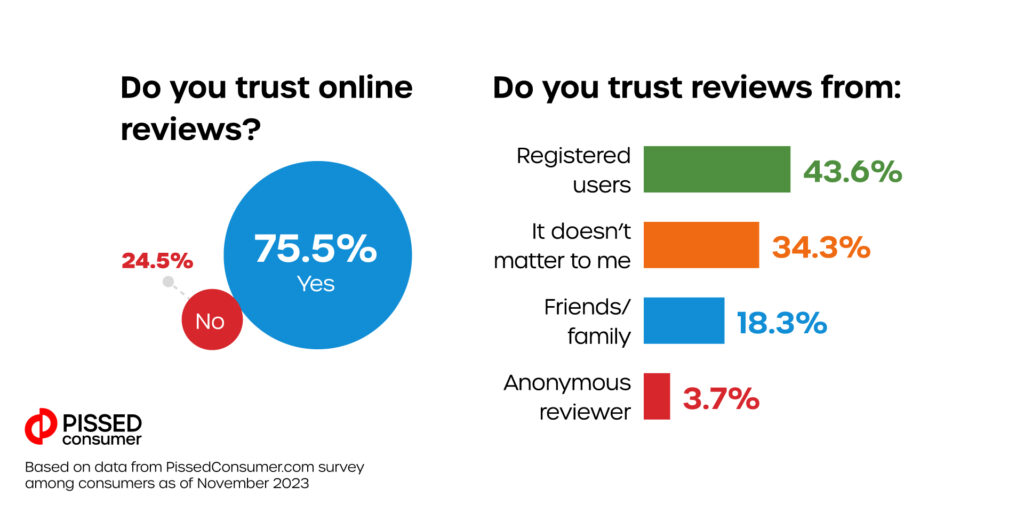
(Source: pissedconsumer.com)
- Online Review Statistics show that most people trust online reviews, especially registered users, while reviews from anonymous sources are the least trusted.
- Registered users are considered the most reliant source for reviews with 43.6%, followed by not mattering with 34.3%, friends/family with 18.3% and anonymous reviews with 3.7%.
The Essential Aspect of The Review
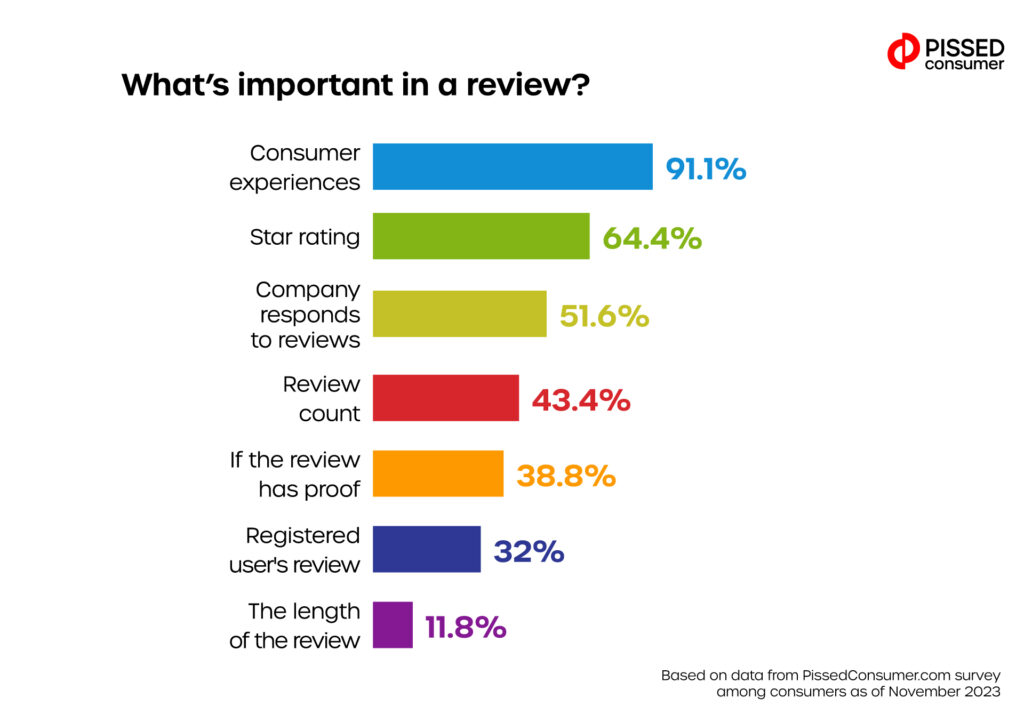
(Source: pissedconsumer.com)
- Online Review Statistics show that consumers prioritise authentic personal experiences in reviews, with star ratings and company engagement also playing a significant role.
- Consumer experiences are crucial, with 1% of people finding them the most important review aspect. Star ratings are valued by 64.4% of consumers, indicating the importance of quick, visual feedback.51.6% appreciate when companies respond to reviews, showing that business engagement matters.
- The total number of reviews influences 4% of consumers, highlighting the impact of quantity on credibility.38.8% of people find reviews with proof important, suggesting a preference for verified or tangible information. Reviews from registered users matter to 32% of people, while the review length is least important at 11.8%.
Online Review Overview
- Online reviews have become crucial to consumer decision-making, influencing purchases across various industries. As of 2023 and 2024, the significance of online reviews continues to grow, impacting both businesses and consumers. From a market researcher’s point of view, analysing Online Review Statistics offers valuable insights into consumer trust, spending behaviours, and brand reputation. In this digital age, reviews affect immediate sales and shape long-term brand loyalty and customer retention.
- In 2023, Online Review Statistics indicated that about 85% of consumers in the United States trusted online reviews as much as personal recommendations. This percentage highlights the high credibility consumers place on reviews when evaluating products and services. This trend underscores the importance of managing online reputation and encouraging positive business reviews. Negative reviews can significantly impact revenue, with studies showing that a one-star decrease in rating could lead to a 5-9% decrease in sales for some industries. The potential financial impact, often in millions of US dollars, makes online review management a priority for businesses looking to protect and enhance their brand image.
- In 2024, the influence of reviews is expected to grow even further as more consumers rely on online feedback before making purchases. According to recent Online Review Statistics, 89% of U.S. shoppers now read reviews before making any purchase, an increase from 85% in 2023. This rise reflects the growing dependence on online reviews as a source of information. With this increasing reliance, businesses are investing more in strategies to garner positive reviews, directly correlating with consumer trust and spending habits. Some companies even offer thousands of US dollars in incentives to customers who leave feedback. However, these incentives must be handled carefully, as overly incentivised reviews can appear less authentic to discerning consumers.
- Another interesting finding in Online Review Statistics is the number of reviews consumers expect before deciding. In 2023, younger shoppers, especially those aged 18-24, expected around 200 reviews on average to feel confident about a product. Older demographics, like those aged 55 and above, were content with fewer reviews, typically around 40-50 reviews. This age-based difference indicates that younger generations prefer a higher volume of feedback, which helps them form a balanced view of a product’s quality. In contrast, older consumers may rely more on a few credible reviews than a high quantity, suggesting differing needs across age groups.
- The financial implications of reviews are substantial. For example, positive reviews can lead to increased bookings in the travel and hospitality industry, adding significant revenue in US dollars. Research shows that hotels and restaurants can experience a 5-10% increase in revenue for every additional star rating on platforms like TripAdvisor or Yelp. 2024, this trend is anticipated to intensify as consumers seek reliable feedback, particularly in high-stakes purchases like vacations or expensive electronics. As more consumers look for validation in online reviews, businesses focusing on maintaining high ratings will likely see better financial returns.
- Fake reviews, however, remain a challenge for both consumers and businesses. In 2023, around 54% of U.S. consumers believed they had encountered fake reviews on platforms like Amazon. This percentage is slightly lower in 2024, with 49% of consumers confident they’ve seen fake reviews. This decline could be attributed to improvements in detecting fraudulent feedback, as major e-commerce platforms invest millions of US dollars in technology to combat fake reviews. For market researchers, this trend suggests an increasing trust in online reviews due to these anti-fraud measures. However, businesses must continue to focus on authenticity, as consumer scepticism regarding fake reviews still affects trust.
- In addition to individual reviews, the average star rating has a powerful influence on consumer decisions. Online Review Statistics from 2023 reveal that 78% of consumers would avoid a product with a rating below four stars. This high standard means businesses must consistently deliver quality experiences to maintain their reputation. A four or five-star rating signals reliability and satisfaction, which can result in more sales and higher revenue in US dollars. By contrast, a lower rating could drive potential customers away, indicating that maintaining a strong online presence is vital for business success.
- Mobile devices play an essential role in how reviews are accessed. In 2024, 60% of consumers reported reading reviews on their smartphones before purchasing in-store, up from 55% in 2023. This increase demonstrates the integration of digital reviews into physical shopping experiences, as consumers seek immediate validation even at the point of sale. For businesses, this trend emphasises the importance of mobile-optimized review platforms. Ensuring that reviews are easily accessible on smartphones can provide a competitive edge, especially in sectors where consumers make high-value purchases and want real-time insights.
- As for the types of products most impacted by reviews, electronics, fashion, and home goods remain at the top. Online Review Statistics show that consumers heavily rely on feedback for these categories, with 85% stating they read reviews before buying electronics and 70% before purchasing clothing. This trend suggests that industries, where consumers seek reassurance about quality and usability, benefit significantly from positive reviews. Investing in customer satisfaction and encouraging reviews can yield substantial financial benefits in US dollars for these businesses.
- Online Review Statistics indicate that augmented reality (AR) and virtual reality (VR) could shape review experiences. While only 14% of consumers expressed interest in using AR for shopping in 2024, this technology has the potential to provide immersive experiences that could enhance customer feedback. For instance, AR could allow customers to “try” products virtually before purchasing, potentially reducing the likelihood of negative reviews related to unmet expectations. Though AR adoption is currently low, it represents an emerging area where businesses might focus on enhancing review credibility and consumer trust.
- Online Review Statistics for 2023 and 2024 underline reviews’ critical role in consumer decision-making and business success. Reviews influence a variety of industries, from retail to hospitality, with direct financial implications measured in US dollars. Younger consumers value reviews more, while authenticity and high ratings remain essential across all ages. The continued growth of mobile access to reviews and advancements in fake review detection will likely enhance trust in online feedback. For businesses, focusing on authentic, high-quality customer experiences and managing online reputations is key to leveraging the power of reviews in the evolving digital marketplace.
Conclusion
Online reviews have become an integral part of the modern consumer journey, transforming how people make purchasing decisions. Online Review Statistics showed that 2023 and 2024 reveal a clear generational divide in review consumption, with younger consumers demanding more extensive feedback than their older counterparts. Online reviews’ future evolves with technological advancements, though traditional aspects like star ratings and written feedback continue to dominate consumer decision-making processes.
For businesses, maintaining a strong online reputation through authentic reviews remains crucial for success in the digital marketplace.
Sources
FAQ.
18-24-year-olds expect around 203 reviews, while 25-34-year-olds look for 159 reviews.
As of 2023, 85% of consumers trust online reviews as much as personal recommendations.
Confidence in spotting fake reviews dropped from 54% in 2023 to 49% in 2024, indicating growing challenges in identifying genuine reviews.
Most consumers (78%) avoid products with ratings below four stars, highlighting the importance of high ratings for sales.
60% of consumers read reviews on smartphones before making in-store purchases, underscoring the role of mobile access in shopping decisions.
Electronics, fashion, and home goods are the industries most reliant on reviews, with consumers heavily basing their decisions on feedback in these categories.

Joseph D'Souza founded ElectroIQ in 2010 as a personal project to share his insights and experiences with tech gadgets. Over time, it has grown into a well-regarded tech blog, known for its in-depth technology trends, smartphone reviews and app-related statistics.

